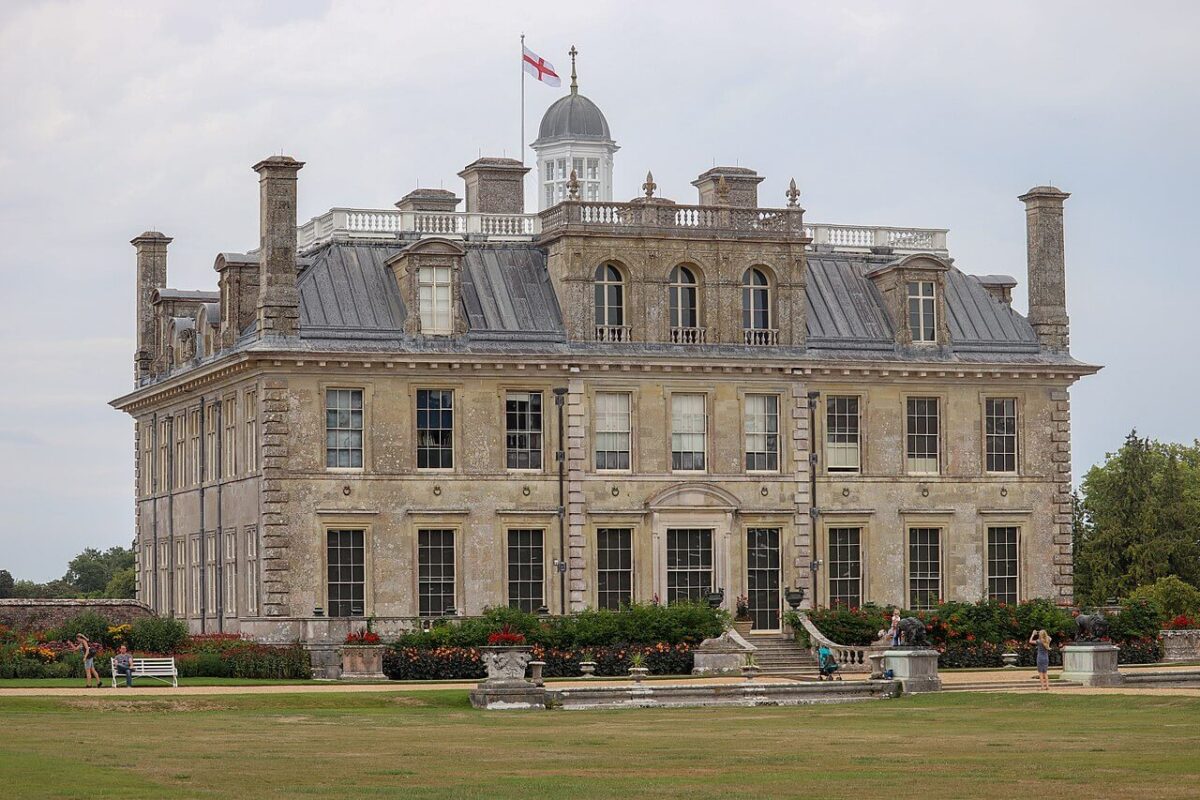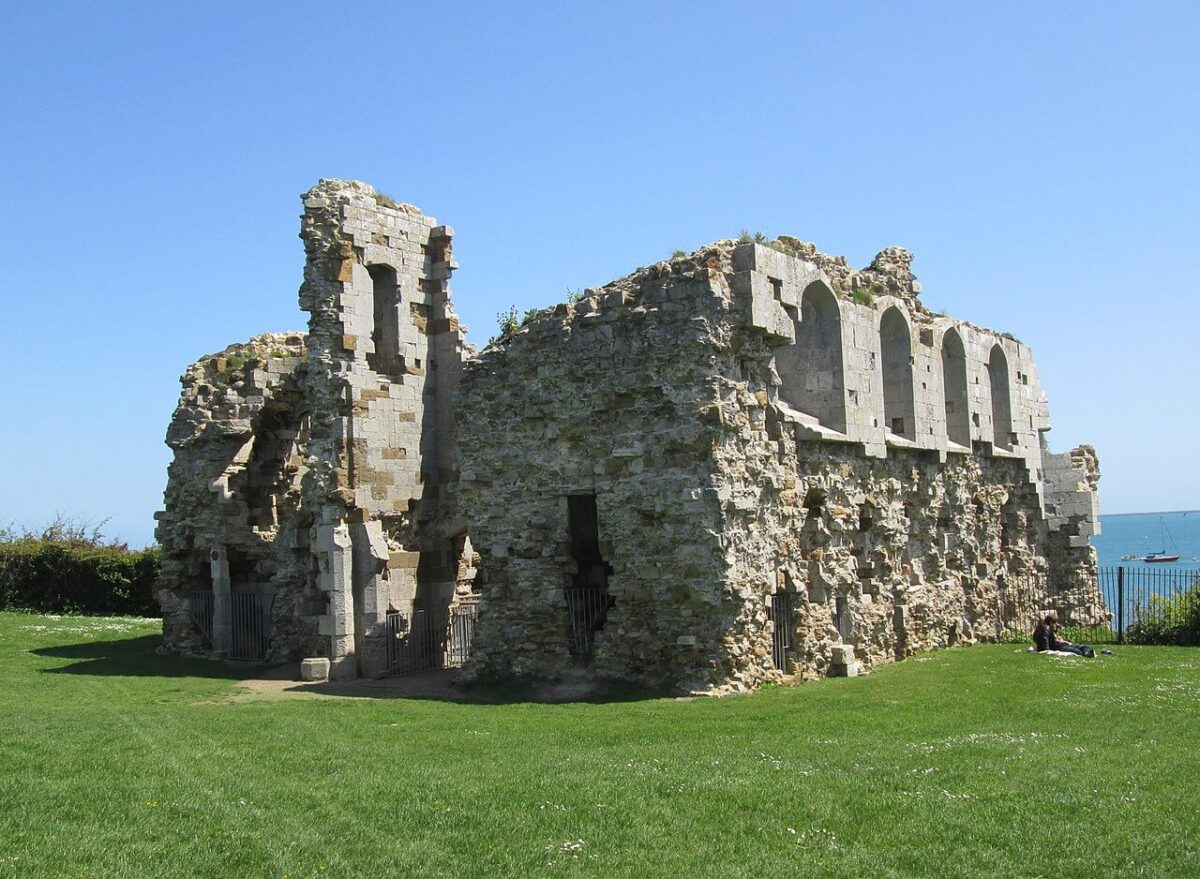The Best Castles & Stately Homes in Dorset
Dorset is a county in the south west of England. Half the county is designated as an Area of Outstanding Natural Beauty. and three-quarters of its south coast is part of the Jurassic Coast Natural World Heritage Site. This alone is a great reason to visit this county but Dorset is also home to beautiful castles and stately homes.
The historic castles and manor houses tell the story of England. You can learn more about their fascinating history and take lovely walks on the castle grounds. Dorset is also the home county of famous writer Thomas Hardy and you can visit the historic house were he was born and the house that he built himself.
These Dorset castles are a delight to visit for young and old. This is a list of the best castles in Dorset.

Athelhampton
Athelhampton Hall is a 15th century Tudor house in Dorset. The 500 year old Great Hall is the heart of the home and has a high hammer-beam roof, stained glass, and linenfold paneling.
Recently, they have added an Elizabethan kitchen to the house and the Oak Parlour has been restored. Surrounding the house are Elizabethan style gardens.
Where: Athelhampton
Built: 1493
Style: Tudor
Visitor information: the house and gardens are open to visitors. Visit the website for opening times.

Forde Abbey
Forde Abbey is a former Cistercian monastery turned private residence in Dorset. Parts of the old monastery are still visible in the house which is unique. The house was rented to philosopher Jeremy Bentham in the 19th century.
Surrounding the house lies a “historically important garden” which was designed in the 18th and 19th centuries.
Forde Abbey was used as a filming location for the adaptation of Far From the Madding Crowd with Carey Mulligan and Michael Sheen.
Where: Chard
Built: 12th century
Visitor information: the abbey and gardens are open to visitors. Visit the website for more information.

Brownsea Castle
Brownsea Castle was built as a Device Fort by King Henry VIII between 1545 and 1547. The castle was built to protect Poole Harbour from a French attack. In 1726, the castle was converted into a private residence by William Benson. Brownsea Island was turned into a landscaped park with ornamental gardens and lakes.
In the 19th century, the castle got its Jacobethan extensions. Mary Bonham Christie (“The Demon of Brownsea”) bought the castle in 1927, she let it fall into disrepair. The National Trust bought the castle after her death and leased it to the John Lewis Partnership who restored the house.
Visitor information: the castle is not open to the public. You can however visit Brownsea Island.
Cranborne Manor
Cranborne Manor is a former Royal hunting lodge built by King John in the 12th century. The manor house was remodeled in the 17th century by The 1st Earl of Salisbury whose main seat is Hatfield House in Hertfordshire. Cranborne is used by the heir to the Earl title.
Surrounding the house are formal and informal gardens with lawns, a kitchen garden, walled gardens, and an orchard.
Where: Cranborne
Built: 1608
Visitor information: only the gardens are open to visitors. Visit the website for opening times.

Highcliffe Castle
Highcliffe Castle is a Gothic Revival mansion in Dorset. The manor is an important example of Romantic and Picturesque style of architecture in England. The manor was built in 1831 by Charles Stuart, Lord Stuart de Rothesay. The house was designed by William Donthorne who incorporated Medieval stonework from the ruined Benedictine Abbey of St. Peter at Jumieges and the Grand’ Maison des Andelys in Normandy.
One of the most famous residents of Highcliffe Castle is Harry Gordon Selfridge, who came to London to open his own store called Selfridges. In the 20th century the house fell into decline and was badly damaged by a fire, but the house has been restored to its former glory.
Where: Highcliffe
Built: 1830
Style: Gothic
Visitor information: the castle is open to visitors. Visit the website for more information.

Kingston Lacy
Kingston Lacy is a 17th century country house that was the family seat of the Bankes family until the 20th century. The Bankes family used to live at Corfe Castle which was destroyed during the English Civil War.
Most of what we see today of Kingston Lacy is thanks to William John Bankes. He was an avid traveler, collector, and draughtsman. He asked architect Sir Charles Barry to remodel the house and reclad it in local Chilmark stone. Most of the Kingston Lacy collection which includes a Rubens, Titian, and Sebastiano, was also collected by him.
But there is more to this estate than just the house. Surrounding the manor are beautiful grounds with formal and informal gardens. As well as a rose garden, a kitchen garden, and parkland.
Where: Wimborne Minster
Built: 1663
Style: Italian style
Visitor information: the house is owned by the National Trust. The house and gardens are open to visitors. Visit the website for more information.

Corfe Castle
Corfe Castle is a fortification overlooking the village of Corfe. The castle was built by William de Conqueror soon after the Norman conquest of England. His son, King Henry I, built the stone keep whose remains can still be viewed today. The castle remained a Royal fortress until 1572 when Queen Elizabeth I sold it. It was the family seat of the Bankes family until they built Kingston Lacy.
Visitor information: the ruins of Corfe Castle are open to visitors. Visit the website for more information.

Lulworth Castle
Lulworth Castle is an early 17th century castle that was originally built as a hunting lodge to entertain aristocracy and royalty. The castle is built in the style of a fortified castle, and it’s one of a few buildings in this style that have remained from the early 17th century.
Though originally built for Thomas Howard, the house has been the family seat of the Weld family for centuries. In the 18th century, the castle was renovated with Adam style interiors. Unfortunately in 1929 most of the interiors were destroyed by a fire. In the 1970s, the building was restored with the help of English Heritage.
Where: East Lulworth
Built: 1588-1609
Style: Elizabethan/Jacobethan with Adam interiors
Visitor information: the castle is open to visitors. Visit the website for more information.

Max Gate
Max Gate is a country house built and designed by the author Thomas Hardy. Hardy lived in this Queen Anne-style house from 1885 until his death in 1928.
Several famous books were written at Max Gate such as Tess of the d’Urbervilles, Jude the Obscure, and The Mayor of Casterbridge.
In 1940, the house was gifted to the National Trust and still feature some of Hardy’s furniture. Though Thomas Hardy’s study can be seen in the Dorset County Museum.
The gardens at Max Gate were a great inspiration for Thomas Hardy. Much of the garden you see today is original.
Where: Dorchester
Built: 1885
Style: Queen Anne
Visitor information: the house is open to the public. Visit the website for more information.
See also: Visit famous writers’ houses in England

Thomas Hardy’s Cottage
A small cob and thatch cottage in Higher Bockhampton has played an important role in the life of writer Thomas Hardy. He was born in this cottage and lived here until he was 34. Famous books like Under the Greenwood Tree and Far From the Madding Crowd were written in this charming cottage.
The cottage was built by Thomas’ grandfather and the cottage garden was partly designed by Thomas Hardy. The cottage is now in ownership by the National Trust. Though the furniture is not original to the Hardy family, they are a reflection of furniture from that time period.
Where: Higher Bockhampton
Built: 1800
Visitor information: the cottage is open to visitors. Visit the website for more information.

Sherborne Castle
Sherborne Castle is a 16th century Tudor mansion built by Sir Walter Raleigh though it has been the home of the Digby family since 1617. The house shows 400 years of English history with various décor style and a grand collection of furniture, paintings, and porcelain.
On site also stand the ruins of Sherborne Old Castle, a 12th century castle that was built as a fortified palace for Roger de Caen, Bishop of Salisbury and Chancellor of England. Surrounding the house lies one of Capability Brown’s first landscaped garden.
Where: Sherborne
Built: 16th century
Style: Tudor
Visitor information: the castle and gardens are open to visitors. Visit the website for more information.

Portland Castle
Portland Castle is an artillery fort overlooking Portland Harbour. The castle was built by King Henry VIII as part of the King’s Device program which had to protect the country against an invasion from France and a Spanish invasion.The casle was also used during both World Wars.
With the free audio tour you will learn more about the castle’s 450 year history. From the Tudor period until the Second World War.
Where: Isle of Portland
Built: 1540s
Visitor information: the castle is owned by English Heritage and it’s open to the public.
Durlston Castle
Durlston Castle is a 19th century folly castle built by George Burt. The castle was never meant to be a residence instead it was built as a restaurant for the Durlston Estate. In the 1890s the castle was used for early wireless experiments to transmit to the Isle of Wight.
The Durlston Country Park and National Reserve is a fantastic day out where you will experience stunning landscapes, wildlife, events, and Victorian history while exploring Durlston’s Jurassic Coast. From the roof of the castle you have a great views of the natural beauty surrounding this building.
Visitor information: read more about exhibitions, guided walks and more at Durlston Country Park at the website.

Rufus Castle
Rufus Castle (also known as the Bow and Arrow Castle) is a ruined castle overlooking Church Ope Cove on the Isle of Portland. The original castle was built for King William II, and the castle is named after the King who was known as William Rufus.
The current structure dates from the 15th century which makes Rufus Castle the oldest castle in Portland. The castle is also known as the Bow and Arrow Castle thanks to the “loop-holes” in the castle walls that would allow archers to fire at invading forces.
Where: Portland
Built: 15th century with Norman keep
Visitor information: the castle ruins are not open to visitors. However, you can virtually tour the castle on the website of the Portland Museum.

Sandsfoot Castle
Sandsfoot Castle (or Weymouth Castle) is a ruined artillery fort built by King Henry VIII as part of his Device program to protect the country from invasion. The castle had an octagonal gun platform that was linked to a residential blockhouse. The castle was in use until 1665.
By the 18th century, the castle had fallen into ruin with the stonework used for other buildings are part of the castle had collapsed in the sea. Repairs were made to the castle to make it publicly accessible but as of 2022, it is closed to the public again because the structure is not safe.





